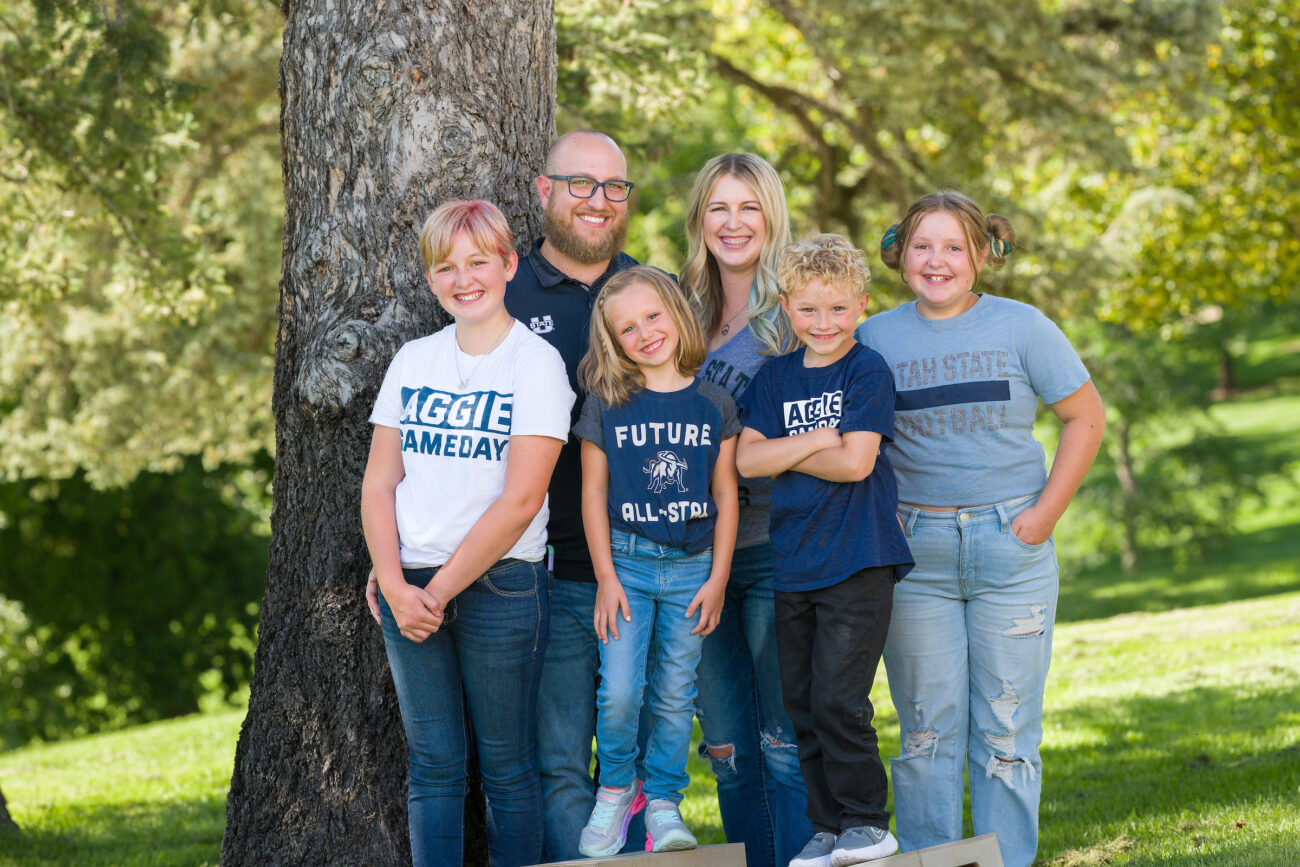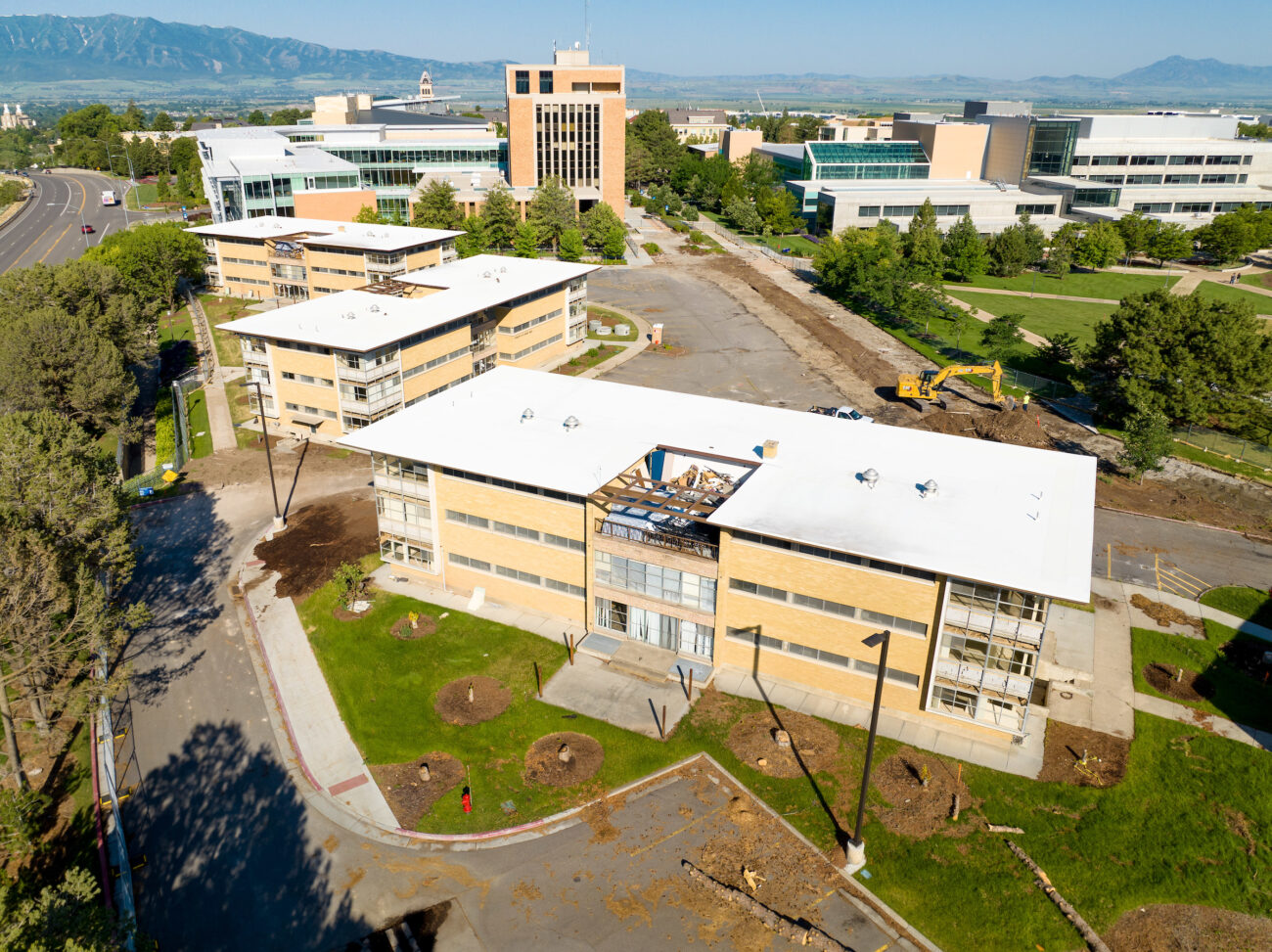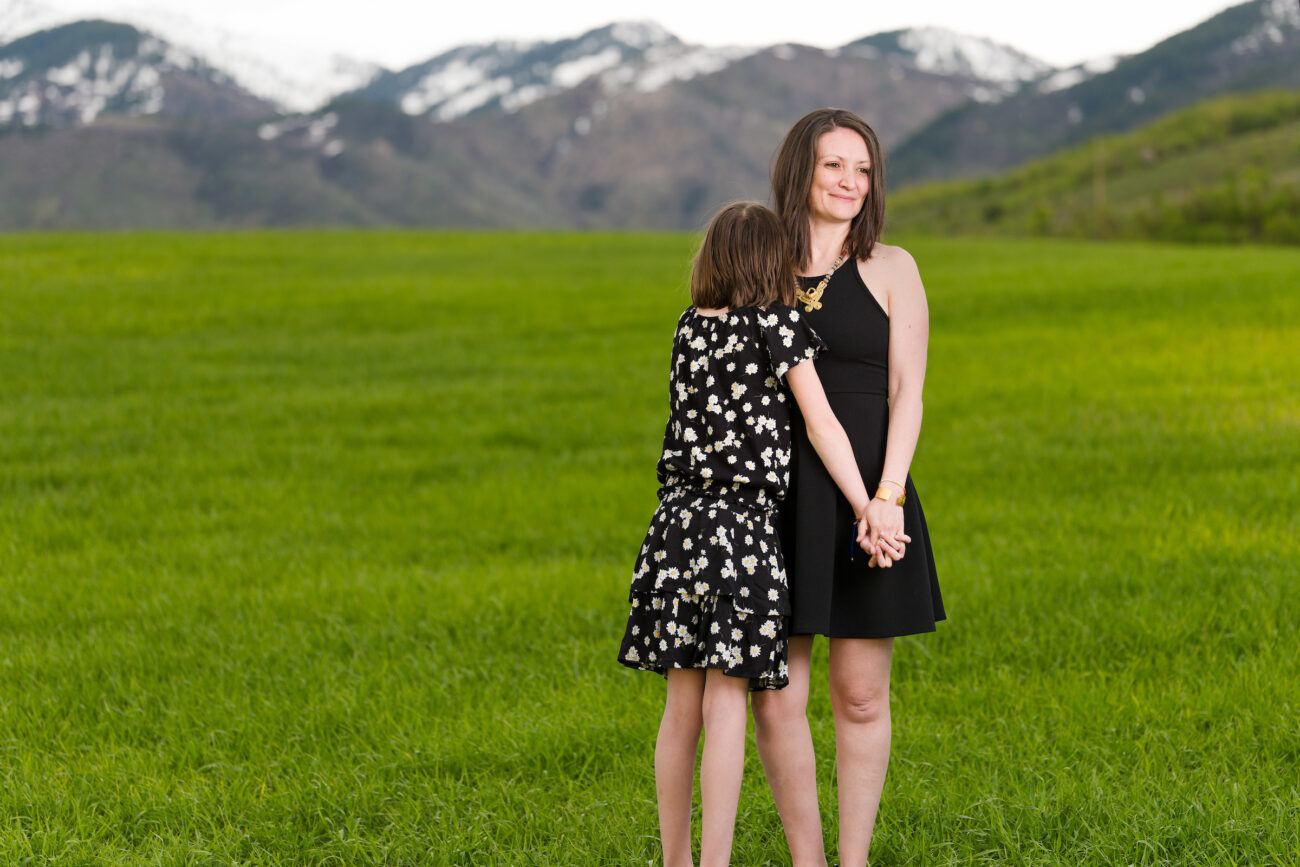A Powerful Place
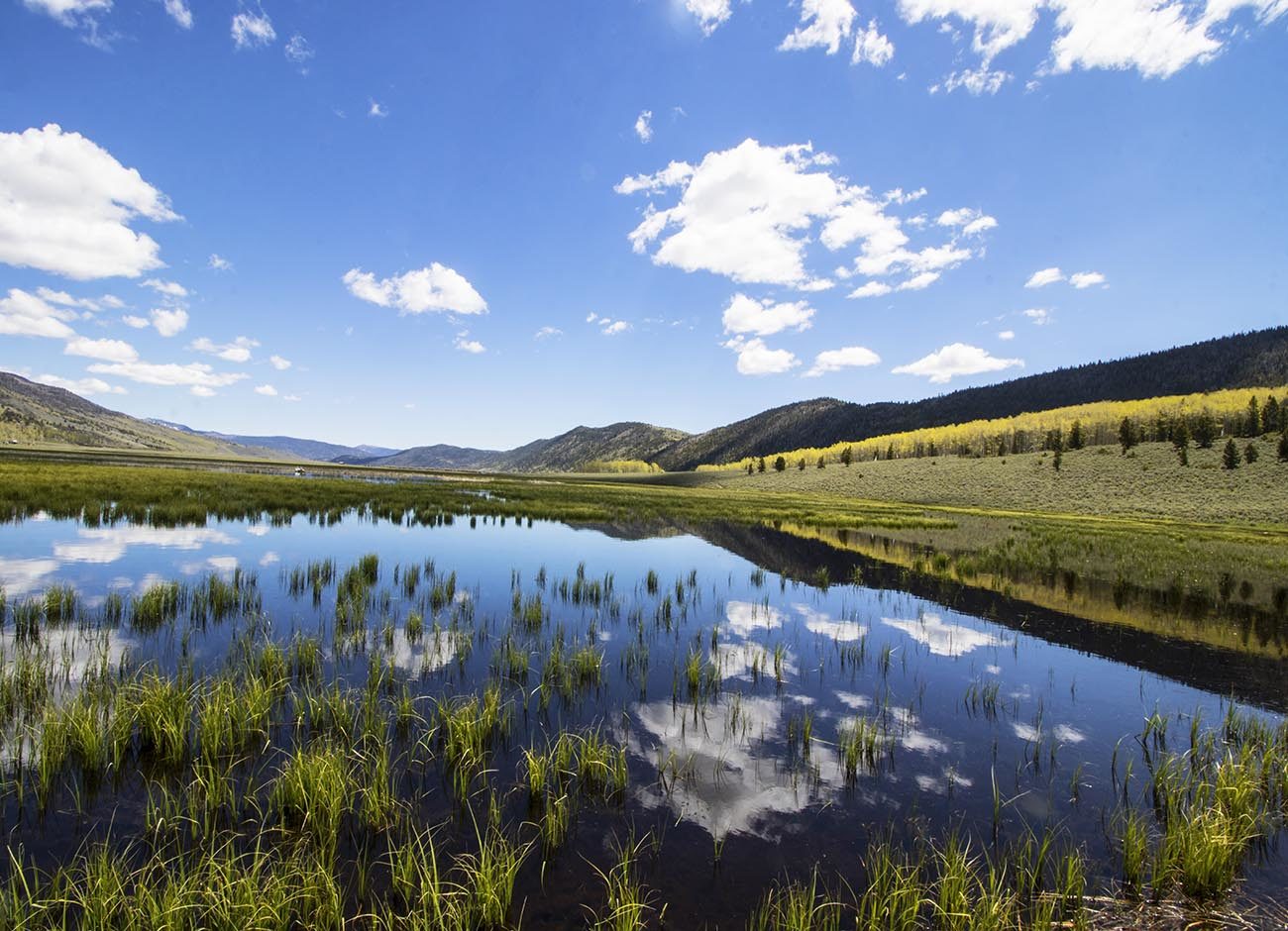
Paul Rogers is comfortable with messiness.
Before he was a researcher monitoring the health of western forests, before he became a disturbance ecologist, Rogers studied geography. This is where things tend to get muddled. Because the study of place is also the study of people. People put lines on maps. People affect landscapes. And sometimes, people harm them.
Rogers’ research examines human impact on the environment, primarily, the ecology of quaking aspen. The species is found across the northern and western reaches of North America. While it doesn’t provide good timber, what aspen lack in economic impacts they make up for in biodiversity benefits.
“Aspen are believed to be second only to riparian zones in western environments for biodiversity,” says Rogers, ’83, Ph.D ’07, director of the Western Aspen Alliance. And lately, the global picture for biodiversity isn’t pretty. In May, the first global assessment of wildlife found one million species threatened with extinction and that most of the planet is “severely altered” by human activity.
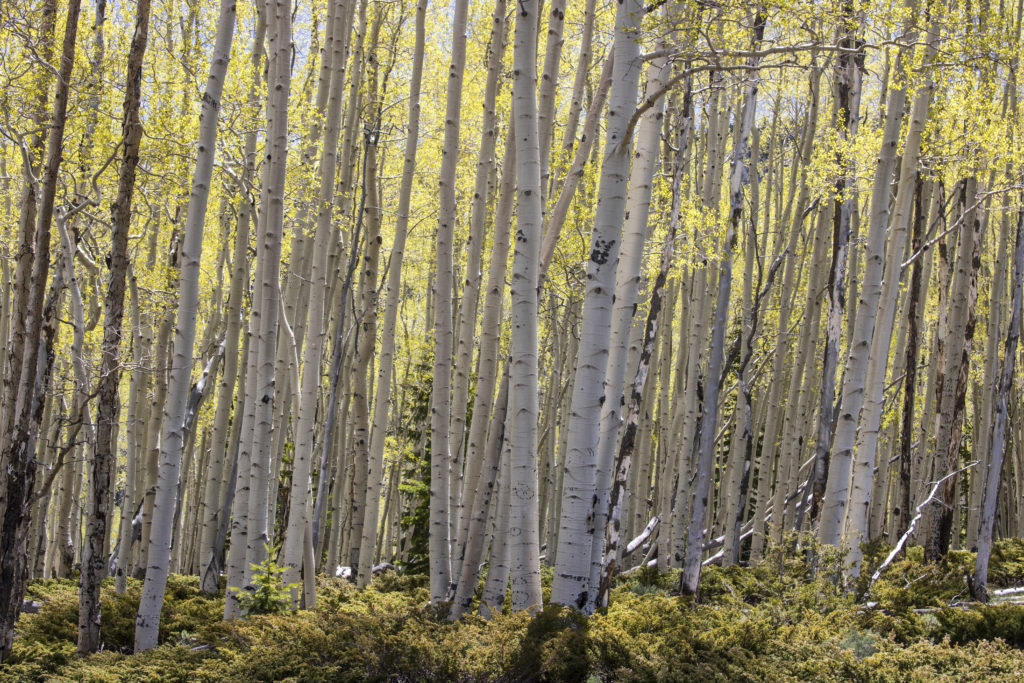
The Pando aspen clone. Photo by Lance Oditt.
Rogers witnesses these changes every time he visits one of his primary research sites, the Pando aspen clone near Fishlake National Forest. Pando, Latin for ‘I spread,’ is believed to be the largest living organism on Earth—at least, for now. When Rogers first visited the aspen stand about a decade ago, it was clearly in bad shape and on a bad trajectory, he says. The problem? The forest was old.
Aspen primarily reproduce asexually and live, on average, about 100 years. The species evolved to favor reproductive speed over longevity. An extensive root system connects the above-ground stems and powers the whole operation through nutrient exchange. New suckers emerge to replace dead trees. This is how the 106-acre Pando clone operated for millennia. But walking through Pando, Rogers noticed that the younger generations— needed to succeed the 47,000 older stems that are dying—were missing.
Aspen are a finicky species. With thin bark that easily scars, aspen are vulnerable to infection and burns. Aspen get “injured by everything all the time,” Rogers says. But that vulnerability is also the source of strength. “Aspen thrives on death. It’s what happens next that is critical.”
“If we can’t figure out these 106 acres, how can we figure out climate change or managing aspen out West? This is symbolic, but it starts here.”
In ecology, there is a theory that in diversity there is resilience. Although genetically the same, aspen clones have diversity in the various ages of their stems, making the organism more resilient to threats. But a clone is only sustainable if enough suckers survive into adulthood. Rogers wanted to understand why Pando’s weren’t. In 2013 and 2014, researchers fenced off two plots within Pando to test various experimental treatments and to limit browsing from herbivores like deer and cattle. Then they waited.
Four years later, the scientists found mule deer had breached the 2014 fence and browsed new suckers to nubs whereas new growth was flourishing in the 2013 enclosure where ungulates were kept out. The researchers published their findings in PLOS ONE, along with aerial images of Pando between 1939 to 2011. The most extreme changes occur in the ‘60s and ‘70s. So, how did an organism that coexisted with herbivores for thousands of years begin failing because of them?
“It clearly points the finger back at us,” Rogers says.

Photo By Lance Oditt
Human decisions shape landscapes, sometimes with cascading effects. Rogers suspects humans disrupted the balance between deer, cattle, and aspen regeneration through wildlife management decisions. For instance, today there are significantly higher populations of elk and deer in the West than in the past. There is an economic incentive to do so, Rogers explains. And the establishment of recreation areas can also create de facto “safe zones” where hunting is not permitted. Coupled with the eradication of apex predators once present in the region such as wolves, aspen clones like Pando can become an open salad bar for ruminants. New suckers get browsed over, leaving a forest of old stems.
“It’s not a matter of no elk, no deer, no cattle, or no sheep,” Rogers says. “It’s a matter of the right numbers and movement.” He recently proposed culling deer populations using professional sharp shooters. Keeping elk and deer on the run gives emerging aspen growth a chance, because walling off Pando isn’t a long-term solution.
Fencing requires upkeep and won’t fix the root problem, Rogers says. “It’s kind of a big sign that says ‘We humans can’t handle the difficult part of this. All we could come up with is a giant Band-Aid.’” He views Pando as a test for humanity: “If we can’t figure out these 106 acres, how can we figure out climate change or managing aspen out West? This is symbolic, but it starts here.”
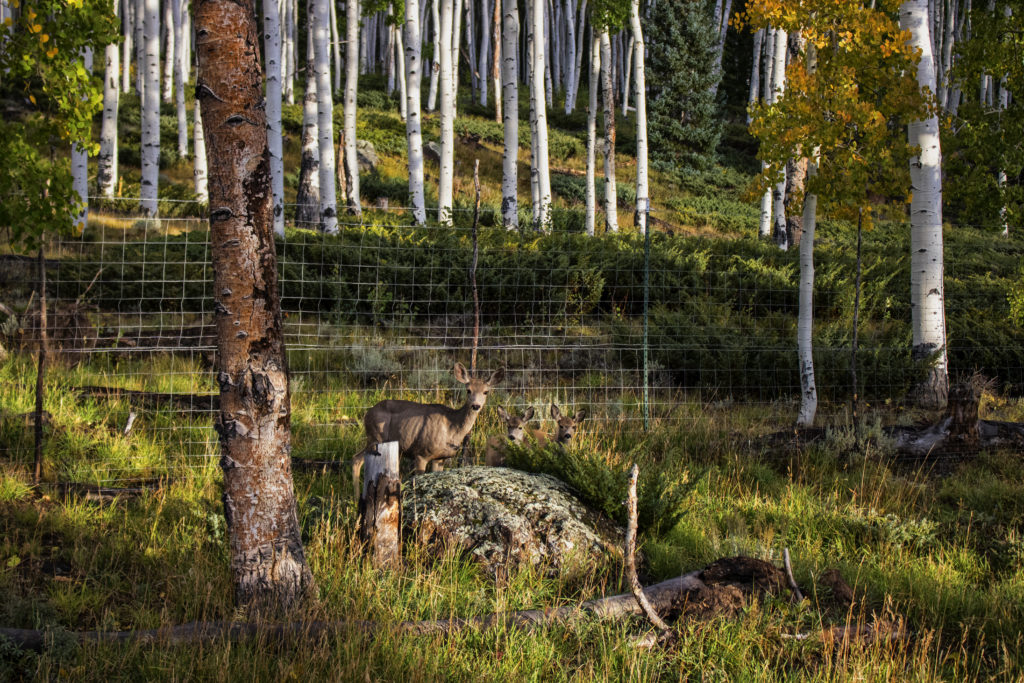
Photo By Lance Oditt
One May afternoon, Rogers stood in a computer lab in the Biology and Natural Resources building toggling his laptop. He was giving a remote presentation to state foresters in Hawaii and clicked to a slide showing a cluster of aspen seedlings growing after a wildfire. “Just 10 or 15 years ago we didn’t think aspen seedlings had anything to do with aspen ecology,” Rogers says. “It was just sort of a novelty if we ever found them.”
The science has changed. Aspen seedlings have been found after several western wildfires. They’re tricky to identify from suckers if you don’t know what to look for, and to add more complexity, aspen don’t seed every year. The seeds are only viable for two weeks and require specific growing conditions. But now that scientists “have the right glasses on,” they find seedlings routinely after wildfire, Rogers says. “There are a lot of ecological ramifications. Obviously, it diversifies the genotype and makes the system more resilient.”
Afterward Rogers walks to his office to meet with a Spanish filmmaker. Since the PLOS ONE paper went viral last October, an East Coast financier has arranged for a private tour of Pando and two children’s book authors have contacted Rogers to learn more. Why do people care about this gigantic aspen stand that doesn’t even have a sign marking its existence?
“Part of it is the simplicity, kind of the Guiness Book of World Records thing—biggest,” Rogers says. “That gets people’s attention.” It’s also what meaning people ascribe to Pando. “It’s often used as a metaphor and that’s attractive.”
The filmmaker, who writes under the pseudonym Matías Cañorroto, has written Pando into his latest project, a tragic comedy. Cañorroto describes the first time he visited Pando three years ago. He wept.
Rogers hands him a piece of bark from Pando—a “talisman” for his project, he says. “It is a powerful place,” Cañorroto says. “There is something happening there, something sad.”



